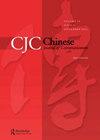Feeling ambivalent while using instant messaging: a value-motive-experience framework comparing maximizers and social groomers
IF 1.9
2区 文学
Q2 COMMUNICATION
引用次数: 0
Abstract
AbstractAdopting a person-centered approach, this article identifies different types of instant messaging (IM) users based on their underlying usage motives (social, hedonistic, and utilitarian) as maximizers, social groomers, entertainment seekers, or minimalists. It also explores users’ value priorities as determinants of this classification. Focusing on the social experiences of two types of users who actively employ IM for social purposes (maximizers and social groomers), this study extends the stimulation hypothesis. Whereas stimulation effects emerge for social groomers, whose social experiences on IM are overwhelmingly positive, they do not arise for maximizers, whose IM social experiences are more ambivalent. Maximizers’ more ambivalent social experiences significantly predict lower relationship satisfaction.Keywords: instant messagingsmartphonemotivessocial experiencesvalues Disclosure statementNo potential conflict of interest was reported by the author(s).Additional informationFundingThis work was supported by National Science Council in Taiwan.Notes on contributorsChingching ChangChingching Chang (Ph.D., University of Wisconsin-Madison) is a Distinguished Research Fellow at Academia Sinica in Taiwan. She has been recognized as one of the World’s 2% Scientists in 2019, 2020, and 2021. With an emphasis on media psychology, consumer psychology, and media effects, she has contributed to various esteemed journals and is committed to advancing knowledge in diverse communication domains.在使用即时通讯时感到矛盾:一个比较最大化者和社交美化者的价值-动机-体验框架
摘要本文采用以人为中心的方法,根据用户潜在的使用动机(社交、享乐主义和功利主义),将即时消息(IM)用户划分为最大化者、社交美化者、娱乐寻求者或极简主义者。它还探讨了用户的价值优先级作为这种分类的决定因素。本研究主要关注两类出于社交目的而积极使用即时通讯的用户(最大化者和社交美化者)的社交体验,扩展了刺激假说。而刺激效应出现在社交美容师身上,他们在即时通讯上的社会体验是绝对积极的,而最大化者则没有,他们的即时通讯社会体验是更加矛盾的。最大化者更矛盾的社会经历显著地预示着较低的关系满意度。关键词:即时通讯智能手机情感因素社会经历价值观披露声明作者未报告潜在的利益冲突。本研究得到了台湾国家科学委员会的支持。张青青(美国威斯康星大学麦迪逊分校博士),台湾中央研究院特聘研究员。她在2019年、2020年和2021年被公认为世界2%的科学家之一。她的研究重点是媒体心理学、消费者心理学和媒体效应,为各种受人尊敬的期刊撰稿,并致力于在不同的传播领域推进知识。
本文章由计算机程序翻译,如有差异,请以英文原文为准。
求助全文
约1分钟内获得全文
求助全文

 求助内容:
求助内容: 应助结果提醒方式:
应助结果提醒方式:


